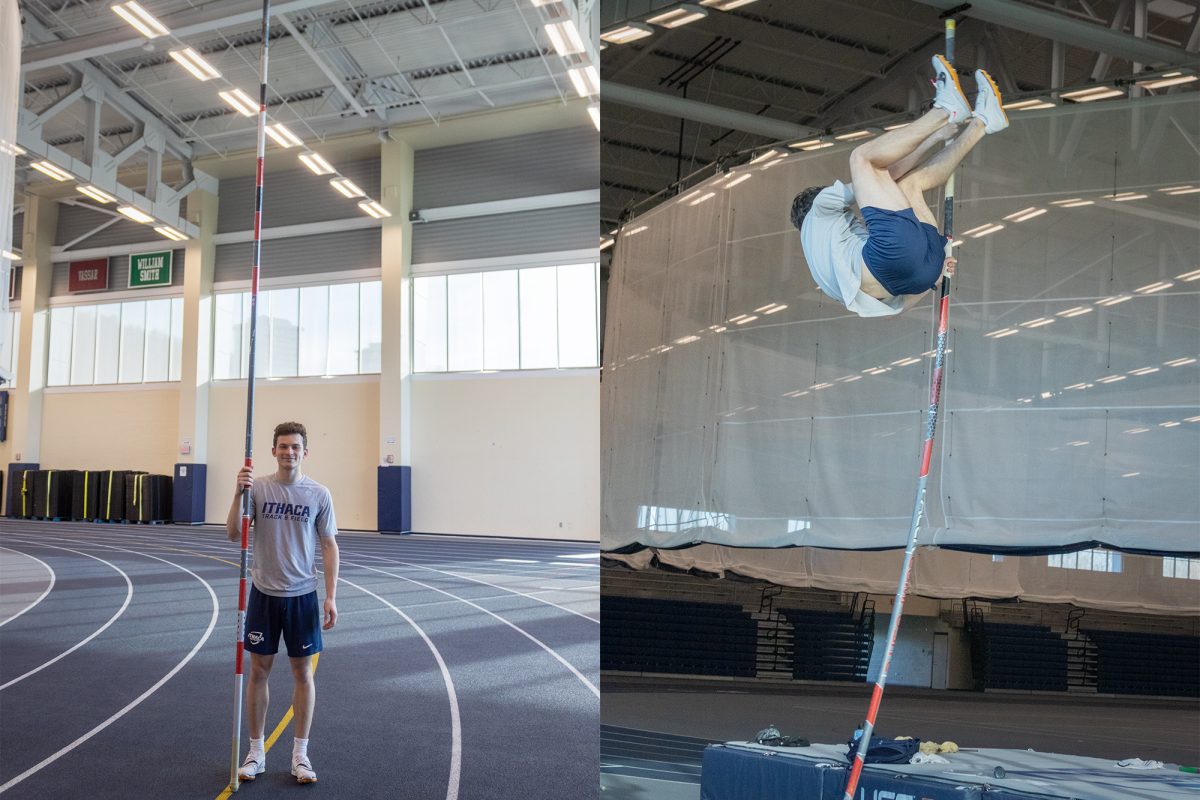Lacrosse is one of many sports to have both a men’s and women’s team. However, multiple physical and technical differences separate the two, creating different versions of lacrosse.
The major differences are how much contact is allowed, the style of play due to the number of players on the field, the dimensions of the field and the equipment.
Freshman attackman Connor Hulme said the men’s games draw more attention and are more exciting to watch.
“I think the level of contact and physicality determines the amount of fans that come,” Hulme said. “In my opinion, the more contact there is, the more spectators we will draw to our games.”
While the men’s game is monitoring on how much contact it allows, Jeff Long, head coach of the men’s lacrosse team, said hitting and being aggressive is not discouraged but is under watch at all times.
“They really don’t want contact, and there are a lot of rules that prevent excessive contact,” Long said. “Our game is pulling back with the big contact. … You can’t be overly physical in terms of being overly aggressive or unfair.”
Women’s head coach Karrie Moore compared the contact displayed in women’s lacrosse to that of the difference in contact between men’s and women’s ice hockey.
“There’s still a lot of contact; you just can’t outright hit somebody,” Moore said. “The contact is more like in basketball, but rule differences are very similar.”
In basketball, some contact is allowed, but if it is deemed by an official to be excessive or out of line, a foul is called.
In men’s lacrosse, body contact is allowed, which is the main difference between the men’s and women’s game.
However, both games include stick checking, the other main form of legal aggression.
These differences in contact lead to varying requirements when it comes to equipment.
Men wear padding on their forearms, chest, shoulders and back, and also helmets with masks. Due to less contact, women are only required to wear goggles, mouth guards and gloves.
Moore said the mouth guards protect against concussions more than anything, and with concussions now becoming a common and prominent injury, there have been talks of adding helmets to the women’s game.
“Personally, I don’t want to be in helmets,” Moore said. “There’s not really a whole lot of research that says it will make it any better.”
Moore talked about how in soccer and ice hockey, there are more injuries, including concussions due to more contact in those sports than women’s lacrosse — her reasoning behind why helmets aren’t necessary to the women’s game.
Another difference is the field dimensions. The women’s field is 120 yards long and 70 yards wide, compared to the men’s field, which is slightly smaller at 110 yards long and 60 yards wide.
Before the 2003–04 season, the women’s game had unlimited boundaries, which meant players could use any natural game space of the playing area. This rule has since been replaced to make the game quicker and to promote offense.
“With the women’s game, the history of that is that we didn’t use to have hard boundaries so they tried to make the field as long as possible.” Moore said. “But because people mostly play on football and soccer fields, that was as big as they could make the field.”
The final major difference is the number of players on the field.
A normal men’s formation fields three defenders, three midfielders, three attackers and a goaltender. The women’s game adds one extra attacker and defender.
Men’s lacrosse has a shot clock, which is a rundown clock that lets the offensive team know how much time it has to shoot the ball on goal before it is turned over to the other team. It is 30 seconds long and was approved in June 2014, with Division I schools’ using it this season, and will make its debut in Division II and III schools next season. The shot clock was created to try and speed up possessions and prevent teams from stalling in the offensive zone.
On the other hand, the women will have a possession clock, which combines the concepts of both a shot and transition clock. The new rule is intended to limit the abuse of clock management and quicken the pace of the game. The women’s clock was approved in July 2015 and will be implemented in Division I in 2017 and Division II and III in 2018.
Despite these variances, men’s and women’s lacrosse still share the same goal: to compete at the highest level and produce entertainment for their viewers through the speed and excitement of the game.
“The speed of play is making it better for everyone. It’s more fun to watch; it’s more fun to play,” Long said. “People want to see goals being scored. … They want to see a 15–12 lacrosse game, and that’s what we are working towards.”














